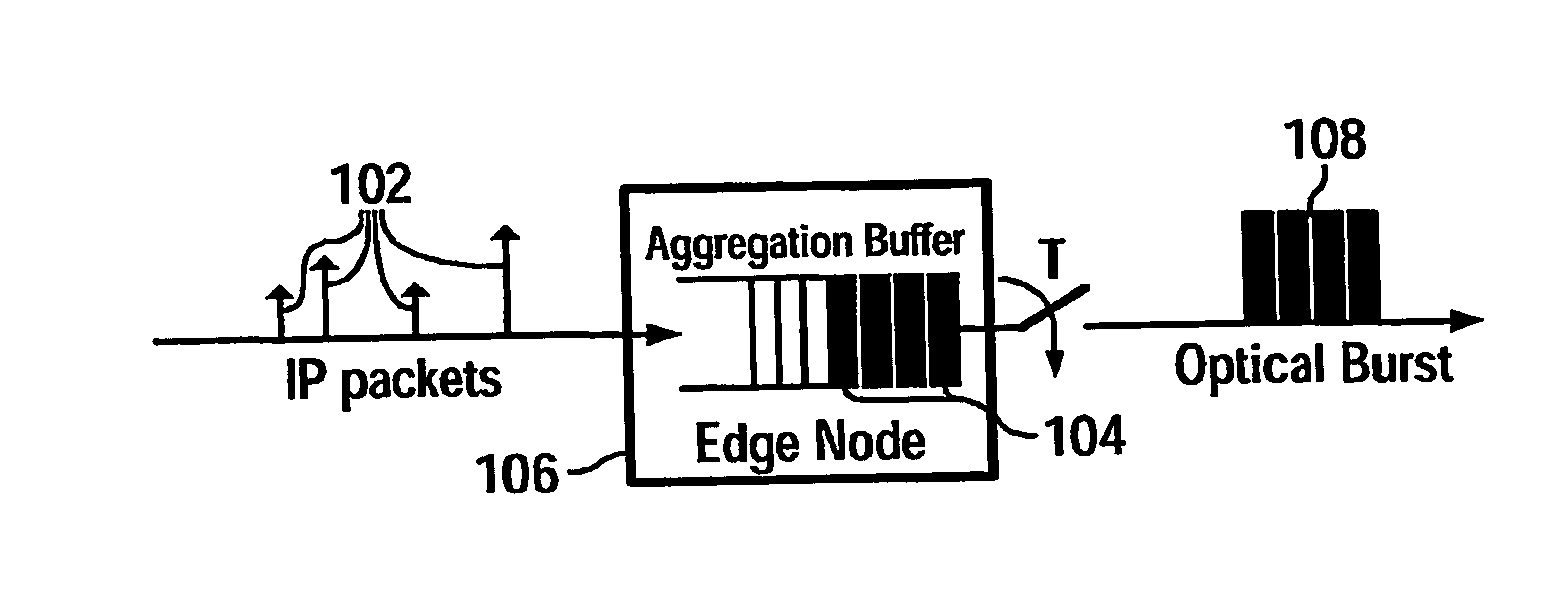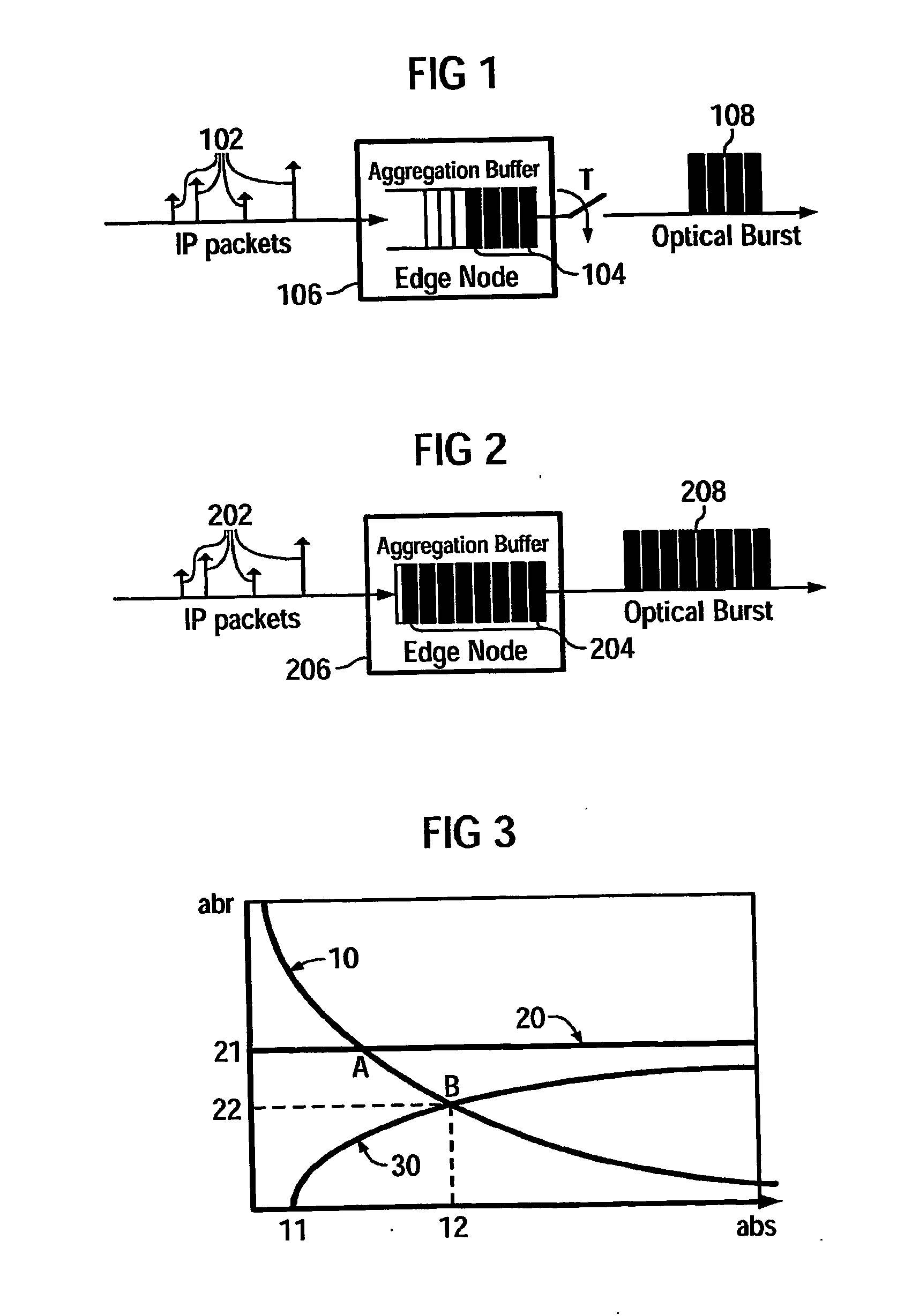Method for transmission of data packets through a network
a data packet and network technology, applied in data switching networks, frequency-division multiplexes, instruments, etc., can solve the problems of timeout and buffer limit having the disadvantage of a certain blocking probability and an achievable throughput, and achieves the effect of maximizing throughput in the network, reducing blocking probability, and reducing buffer limi
- Summary
- Abstract
- Description
- Claims
- Application Information
AI Technical Summary
Benefits of technology
Problems solved by technology
Method used
Image
Examples
Embodiment Construction
[0037]FIG. 3 shows a diagram with three curves 10, 20, 30. On the x-axis the average burst size abs and on the y-axis the average burst rate abr is shown. Values 11, 12 for two average burst sizes are shown on the x-axis and a value 21 for an average burst rate is shown on the y-axis. The first curve 10 is a throughput curve and displays a dependency between the average burst size and the average burst rate for a given, constant throughput TP, according the following formula:
TP=abr·abs Equation 12
[0038] When we move on the throughput curve to the left (smaller bursts and higher rates, the burst blocking probability increases. The frequency of bursts is higher, and therefore it is more probable that the switching time guard is not respected. The value 21 with the curve 20 imposes a maximum average burst rate for a given burst blocking probability. This leads two a maximum average burst rate and an average burst size according to the throughput curve, represented by a point A in FIG...
PUM
 Login to View More
Login to View More Abstract
Description
Claims
Application Information
 Login to View More
Login to View More - R&D
- Intellectual Property
- Life Sciences
- Materials
- Tech Scout
- Unparalleled Data Quality
- Higher Quality Content
- 60% Fewer Hallucinations
Browse by: Latest US Patents, China's latest patents, Technical Efficacy Thesaurus, Application Domain, Technology Topic, Popular Technical Reports.
© 2025 PatSnap. All rights reserved.Legal|Privacy policy|Modern Slavery Act Transparency Statement|Sitemap|About US| Contact US: help@patsnap.com



